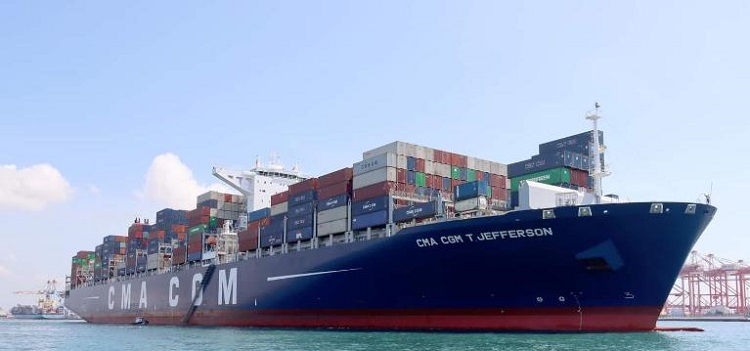The maritime industry, an intricate network that fuels global trade, is marked by constant innovation and evolution. In this dynamic sphere, the CMA CGM T. Jefferson stands tall as a testament to modern shipping advancements, reshaping the seascape with its cutting-edge features and capabilities.
Setting New Standards in Maritime Excellence
The CMA CGM T. Jefferson, a colossal container vessel, commands attention not only for its sheer size but also for its innovative design and technological prowess. Constructed by the renowned French shipping company CMA CGM Group, this vessel represents a milestone in maritime engineering and efficiency.
Named after Thomas Jefferson, one of America’s founding fathers and visionaries, this ship embodies the spirit of exploration and progress. With a length reaching approximately 400 meters and a carrying capacity exceeding 13,000 TEUs (Twenty-foot Equivalent Units), the T. Jefferson is a marvel in the realm of container shipping.
Technological Marvels Aboard
What sets the CMA CGM T. Jefferson apart is its state-of-the-art technological features. Equipped with advanced navigation systems, it ensures precise and safe voyages across the oceans. Additionally, its environmentally friendly design incorporates energy-efficient engines, reducing its carbon footprint and aligning with global sustainability goals.
One of the defining aspects of the T. Jefferson is its integration of digitalization and automation. Automated cargo handling systems streamline operations, enhancing efficiency while minimizing human error. This technological leap not only optimizes the vessel’s performance but also underscores the industry’s shift towards embracing digital solutions for enhanced productivity.
Redefining Efficiency and Connectivity
Efficiency in maritime operations is crucial, and the T. Jefferson excels in this aspect. Its ability to navigate through major trade routes with swiftness and reliability is unparalleled. By maximizing cargo capacity and minimizing transit times, this vessel significantly contributes to the smooth flow of goods worldwide.
Moreover, the T. Jefferson serves as a bridge connecting continents and economies. Its vast cargo holds facilitate the transportation of various goods, fostering global trade and economic interdependence. From consumer electronics to agricultural products, the vessel facilitates the movement of commodities that sustain economies around the globe.
Challenges and Future Prospects
Despite its technological advancements, the CMA CGM T. Jefferson encounters challenges inherent to the maritime industry. Factors like adverse weather conditions, geopolitical uncertainties, and regulatory changes pose continuous challenges. However, the vessel’s adaptability and robust design enable it to navigate through these challenges with resilience.
Looking ahead, the future of maritime shipping seems promising with vessels like the T. Jefferson leading the way. Innovations in propulsion systems, further integration of artificial intelligence, and advancements in eco-friendly technologies are anticipated. These developments will not only enhance operational efficiency but also contribute to reducing the industry’s environmental impact.
Conclusion
The CMA CGM T. Jefferson epitomizes the convergence of innovation, efficiency, and sustainability in the maritime domain. Its remarkable features and capabilities underscore the transformative potential of modern shipping vessels. As it navigates the seas, the T. Jefferson continues to shape the industry’s landscape, setting new benchmarks for excellence and inspiring the next generation of maritime advancements. In the global tapestry of trade and connectivity, the T. Jefferson stands as a beacon of progress, propelling the world towards a more interconnected future.
The legacy of the CMA CGM T. Jefferson extends far beyond its steel structure and colossal size—it embodies the relentless pursuit of excellence in the maritime industry.

